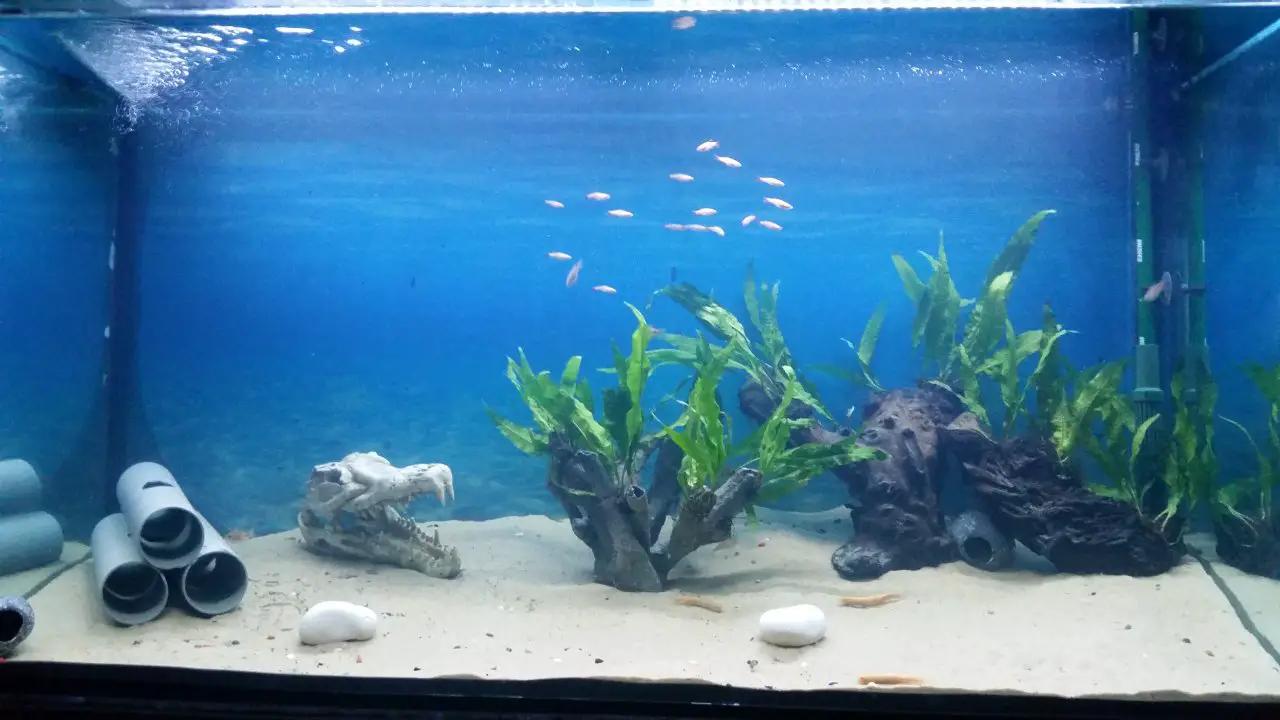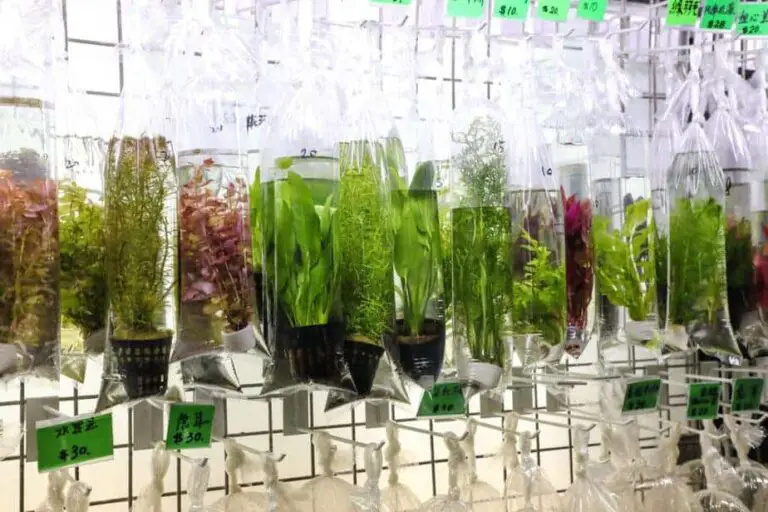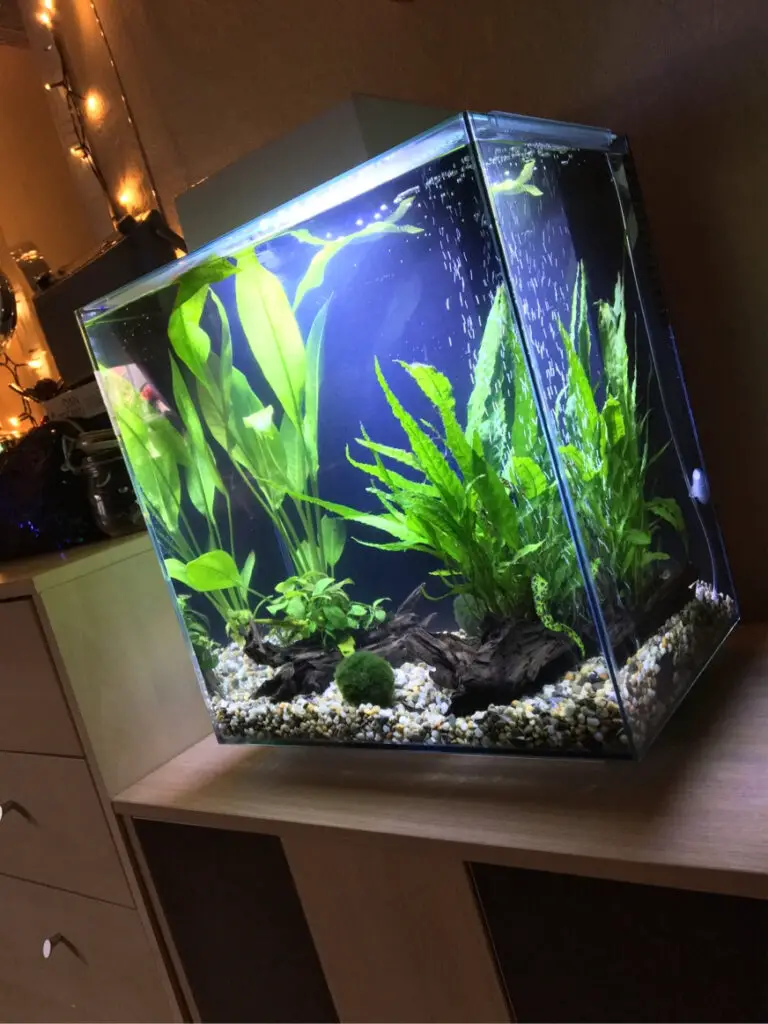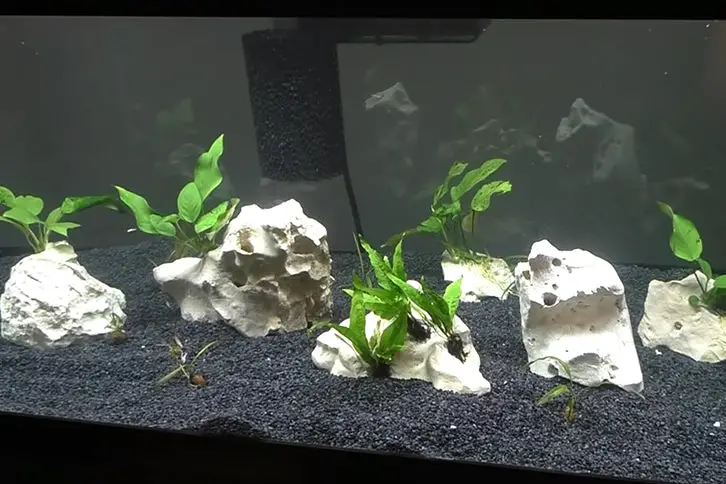How to Add Sand to an Established Freshwater Aquarium?
To add sand to an established freshwater aquarium, start by using a gravel vacuum to remove some of the existing substrate.
Next, rinse and submerge the new sand in a bucket of tank water for at least 30 minutes before adding it to the aquarium so that any dust particles can settle out.
After this is done, use a plastic cup or other scooping tool to slowly add the sand around the edges of your tank, avoiding areas where plants are growing.
Once all of the new sand has been added, you may want to use your gravel vacuum again along with some additional water changes over several days if necessary.
This will help clear up any remaining debris and ensure that your tank stays healthy and balanced.
Step 1: Choose the material for your aquarium’s bottom. Sand is common because it looks good and helps make nice underwater landscapes.
However, you can also use gravel or other materials based on your preference and how much you want to spend.
Step 2: Clean the sand before adding it to the tank. If using play sand, rinse it thoroughly in a bucket until all visible debris has been removed.
Alternatively, if using aquarium-grade live or non-live sand, skip this step.
Step 3: Slowly pour sand into one end of the tank to make a thin layer. Be careful not to mess up any plants or decorations in other parts of the tank.
Step 4: Put a plate on the thin layer of sand and carefully add more sand to it. This helps spread the sand evenly without messing up the layer below.
It also prevents loose sand from spreading while you add more to the tank.
Step 5: Keep adding sand slowly until you get the depth you want, usually about two inches.
After that, clean up any leftover debris and look for air bubbles trapped under rocks or decorations.
You can use something like a chopstick to gently break these bubbles before covering them with sand again. This helps keep the pH levels balanced.
Adding Sand to an Established Aquarium
Adding sand to an established aquarium can be a great way to improve the look and feel of your tank.
Sand gives an aquarium a more natural, aesthetically pleasing appearance as well as providing beneficial bacteria with plenty of surface area for colonization.
It also helps maintain water quality by trapping debris in its grains and providing a buffer against rapid pH changes.
When you add sand to your aquarium, use clean or live sand made for aquariums to avoid harmful substances.
Don’t add too much sand at once. Add a little bit over time to keep the tank balanced and avoid issues.
Can You Add Sand to an Aquarium With Fish in It?
Adding sand to an aquarium with fish in it is possible, but it’s important to take the necessary steps for a successful transition.
Firstly, you should introduce the sand slowly; adding too much at once or disturbing the substrate can cause a cloud of sediment that may harm your fish.
Secondly, ensure that any added sand is pre-washed and free from contaminants such as heavy metals which can be toxic to aquatic life.
Lastly, if possible, gradually increase oxygen levels by introducing an air pump or filter during this process to help keep water quality stable.
Adding Sand to Aquarium With Bottle
Adding sand to an aquarium with a bottle is a simple and effective way to add substrate to the tank.
This method involves pouring dry, clean play sand into an empty plastic bottle such as a water or soda bottle with the cap off.
Once filled, place the opening of the bottle inside the aquarium, holding it close to where you want to add your substrate.
Gently squeeze and swirl the bottle in order for more precise placement of your sand within your tank.
When finished, carefully remove and discard any remaining material from outside of your tank before replacing all equipment necessary for operation.
Best Sand for Freshwater Aquarium
When choosing the best sand for your freshwater aquarium, it is important to consider its grain size and color.
Sand with coarse grains offers more surface area for beneficial bacteria colonies to grow on, while finer-grained sand helps to create a smoother appearance in the tank.
Colored sands can also be used as an aesthetic enhancement, often coming in shades of black, white, browns and blues.
When selecting any type of substrate material for your aquarium setup, always make sure that it is safe for use with fish and other aquatic life forms.
Adding Sand to Established Reef Tank
Adding sand to an established reef tank can be a tricky process and should be done with care.
It is important to use only high-grade, aquarium safe live sand when attempting this task as anything else could contaminate the environment in your tank.
It is best to add small amounts of sand at a time over several days or weeks so that you do not disturb any existing corals or fish too much with sudden changes in water chemistry.
How to Add Sand to a Fish Tank With Water?
Adding sand to a fish tank with water is an important step in creating a healthy environment for your fish.
First, make sure the sand you are using is specifically made for aquarium use; some sands can contain silicates that can be harmful to your fish if ingested.
Next, fill the bottom of the tank with one inch of water and slowly pour the sand on top until it reaches two inches deep.
Be sure to spread out any clumps as you go and keep stirring up the water so no pockets of air form underneath.
Finally, use a gravel vacuum cleaner or siphon hose to clean off any excess dust before adding more water into the tank.
Aquarium Sand
Aquarium sand is a popular choice for the substrate of home aquariums.
It provides an aesthetically pleasing look and feel to any tank, while also providing beneficial bacteria with plenty of places to live.
Sand can be purchased in various colors and sizes, so you can customize the look of your tank to fit your taste.
It’s easy to maintain as long as regular water changes are performed and debris is removed from the surface regularly.
Sand for Aquarium Freshwater
Aquarium freshwater sand is a great way to provide natural biological filtration, improve water clarity and support beneficial bacteria.
Sand provides a more natural environment for fish and other aquatic creatures, with plenty of places to hide and explore.
The sand should be chosen based on the size of your aquarium inhabitants – larger grains will prevent smaller fish from being sucked into the filter intakes.
It’s important to choose an inert type of sand since some types can adjust pH or add unwanted nutrients which can cause algae issues in your tank.

How Do You Add Water Without Disturbing Sand?
Adding water to sand without disturbing it can be tricky. The best way to do this is by using a watering can or irrigation system that emits a fine mist so the water doesn’t just pour into the sand and disturb it.
You should also position your watering device above the surface of the sand, not directly in contact with it, and make sure you have enough room for even distribution.
If you don’t have access to any fancy irrigation systems, you can try pouring small amounts of water onto different areas of the sand from a greater distance away.
This will help minimize disturbances as much as possible while still adding moisture to the area.
Finally, once you’ve added enough water to dampen all parts of the sand evenly, gently tamping down around each area with your hands or feet will ensure that any remaining disturbance is kept at a minimum level and does not affect other areas too drastically.
How Do You Add Sand to an Already Established Tank?
Adding sand to an already established tank can be done in several different ways.
The first step is to make sure that the substrate you are using is safe for your fish and other aquatic life.
Once you have determined this, you should choose a location in the tank with good flow so that the sand will not settle too quickly or get stuck in any crevices of rocks or plants.
Next, use a small container such as a cup or bowl to slowly add the sand into your tank, making sure it does not create any clouds when added.
To ensure even distribution of the material, use your hand to gently stir and move it around until it covers all areas of your desired depth.
Finally, after adding the required amount of sand and stirring thoroughly, turn off all filtration systems for at least one hour while allowing time for sedimentation before restarting them again.
This will prevent cloudiness from occurring within the aquarium environment once everything is back up and running normally.
Can You Add Sand to an Established Aquarium?
Adding sand to an established aquarium can be a great way to give your fish tank a fresh new look and make it more hospitable for your aquatic creatures.
The process of adding sand is relatively straightforward, but there are some important considerations.
First, pick the right sand for your aquarium. Most use silica or quartz sand, but ask a pet store or expert to know what size and type is best for your tank.
Once you’ve selected the right sand for your aquarium, it’s time to start adding it into the tank.
You’ll want to evenly spread the material across the bottom of the tank, being careful not to disturb any decorations or plants already present in the environment.
Finally, after all of the sand has been added you’ll need to rinse out any dust particles that may have formed during transport by running water through a strainer over top of it until they’re gone.
Adding sand into an established aquarium is a great way refresh its overall appearance while introducing some beneficial bacteria that can help keep things healthy and thriving!
Is It Ok to Put Sand in a Freshwater Tank?
The answer to this question depends on the species of fish you plan on keeping in your freshwater tank.
Sand is not recommended for most freshwater tanks because it can be difficult to keep clean and can cause water quality issues.
Sand also provides a place for detritus and other debris to accumulate, which could lead to poor water quality or even disease if left unchecked.
Certain types of sand can have an adverse effect on pH levels and water chemistry which may negatively impact the health of your fish.
That said, there are some aquariums that use sand as a substrate with no problems at all; so it’s important to research any potential risks before adding sand into your tank.
Do I Need to Soak Sand before Adding It to an Aquarium?
When it comes to adding sand to your aquarium, there are a few things you should keep in mind.
The most important one is whether or not you need to soak the sand before adding it to the tank.
Some people don’t think it’s needed, but washing your sand before using it can remove harmful particles and dust.
To do this right, put the sand you want to use in a bucket of dechlorinated water. Let it sit for 24 hours, stirring it now and then.
Then rinse it until it’s clear and add it to your aquarium. This helps remove impurities and dust from the sand, making your tank cleaner and clearer.
Can I Put Sand on Top of Gravel in My Fish Tank?
Adding sand to your fish tank can be beneficial for its inhabitants, but it’s important to do it the right way.
Sand should never be placed directly on top of gravel as this will disturb the gravel and could cause anaerobic pockets in your substrate.
The best practice is to place a layer of aquarium-safe fabric over the gravel before adding your sand.
This will separate them and prevent the two substrates from mixing while still allowing water and nutrients through.
You should also avoid using too much sand when filling up a fish tank, sticking with no more than three inches (7 cm) thick at most.
Too much sand can make it difficult for some species of fish such as livebearers or bottom feeders like catfish to find food, so try not to exceed this amount when setting up your new tank.
Conclusion
Adding sand to an established freshwater aquarium is a relatively easy process that can add beauty and interest to your tank.
Sand can provide additional filtration and help create a hospitable environment for the fish living in it.
As long as you follow all of the steps outlined in this blog post, you should have no trouble successfully introducing sand into your tank.
With patience, time, and dedication, you too can enjoy the benefits that come with adding sand to your freshwater aquarium.





